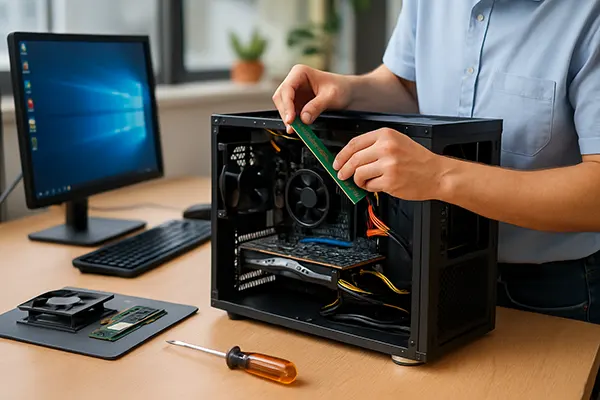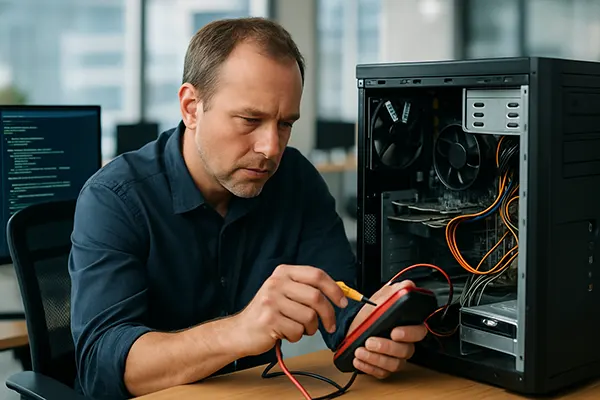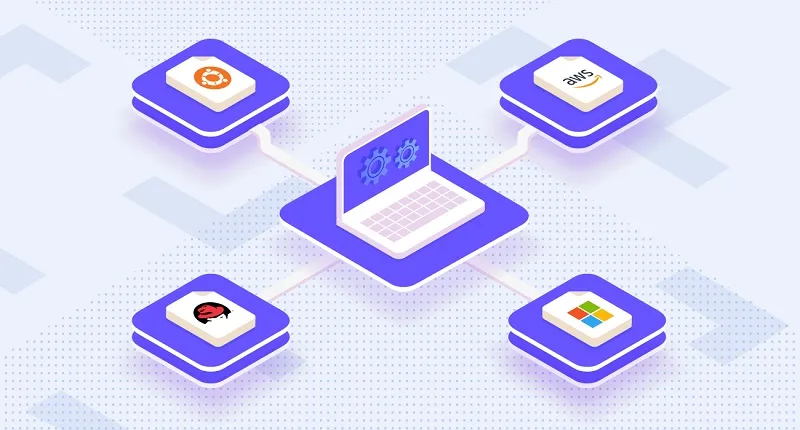
How to Extend the Lifespan of Corporate PCs: Technical and Organisational Advice
In 2025, businesses continue to rely heavily on corporate PCs as essential tools for daily operations. Extending their service life is not only about reducing expenses but also about maintaining productivity, security, and sustainability. By applying both technical improvements and organisational strategies, companies can significantly prolong the performance of their computer fleets.
Technical Practices for Enhancing PC Longevity
One of the most effective ways to ensure a longer service life for PCs is through regular maintenance. This includes cleaning dust from internal components, ensuring sufficient airflow, and updating thermal paste when necessary. Such preventative measures help avoid overheating, which is a common reason for hardware failure.
Another crucial step is keeping operating systems and drivers updated. Modern software updates often include security patches, performance enhancements, and better compatibility with new applications. Ensuring that firmware and BIOS are updated also reduces risks of instability or hardware conflicts.
Additionally, upgrading components instead of replacing entire machines offers cost-effective improvements. Increasing RAM capacity, installing solid-state drives (SSDs), or even upgrading to more efficient power supplies can extend usability without the need for complete replacement.
Security and Performance Optimisation
Security is a key factor that directly influences the lifespan of corporate PCs. Unprotected systems are more vulnerable to malware, which can cause irreversible damage or lead to costly downtime. Implementing endpoint protection, firewalls, and intrusion detection tools helps maintain both performance and integrity.
Performance optimisation should also focus on software management. Removing unused applications, managing start-up processes, and deploying lightweight virtualisation can prevent systems from becoming overloaded. Regular system audits ensure resources are used efficiently, which contributes to longer lifespans.
Finally, energy efficiency plays a major role. Configuring power management settings and replacing outdated power-hungry components with modern alternatives reduces wear and lowers operating costs, while also supporting environmental goals.
Organisational Measures to Prolong PC Usage
Technical strategies alone are insufficient without proper organisational policies. Companies must create clear IT usage guidelines that outline how employees should handle their workstations. These may include rules for software installation, password management, and proper shutdown procedures.
Centralised IT management also extends system longevity. With remote monitoring tools, administrators can proactively detect failing hardware, track software compliance, and schedule updates without interrupting daily operations. This reduces risks of sudden breakdowns and improves overall reliability.
Furthermore, planned refresh cycles allow businesses to gradually replace older systems while still using them for secondary tasks. Instead of discarding machines immediately, they can be reassigned for less demanding operations, training environments, or remote access terminals.
Employee Training and Awareness
Educating employees is vital for extending PC lifespan. Workers who understand how to properly use, store, and maintain equipment are less likely to cause unintentional damage. Training sessions can cover safe internet browsing, avoiding suspicious attachments, and reporting system issues early.
Awareness campaigns also encourage users to treat company hardware responsibly. Simple habits, such as not eating near devices or avoiding unnecessary software downloads, can prevent technical issues. These behavioural changes collectively contribute to longer-lasting corporate PCs.
In addition, creating accountability by linking equipment care to employee performance evaluations can encourage consistent adherence to IT policies. This ensures that prolonging device life becomes a shared responsibility across the organisation.

Future-Proofing Corporate Infrastructure
As technology evolves rapidly, planning for the future is just as important as maintaining current systems. Standardising hardware configurations simplifies upgrades, improves compatibility, and makes troubleshooting easier for IT departments. This reduces the chances of early obsolescence.
Adopting virtual desktop infrastructure (VDI) or cloud-based solutions can further reduce wear on local machines. With more processing handled remotely, corporate PCs act mainly as access terminals, lowering hardware strain and extending service life.
Finally, sustainability strategies are becoming a growing priority. Companies that recycle components, reuse parts, and select environmentally friendly equipment not only reduce costs but also align with corporate social responsibility goals. This dual benefit strengthens both reputation and efficiency.
Long-Term Benefits of Proper Management
Extending the service life of corporate PCs reduces capital expenditure, freeing resources for innovation rather than constant replacements. This creates a healthier balance between investment and operational stability.
Reliable, long-lasting PCs also contribute to employee satisfaction. When systems run smoothly, downtime decreases, and workers can focus on their core tasks instead of dealing with technical issues. This results in higher productivity across departments.
In the long term, proactive PC management enhances business resilience. By combining technical upgrades with organisational best practices, companies protect themselves against unexpected failures, data breaches, and financial losses caused by poorly maintained infrastructure.
Popular topics
-
 Top 5 popular programs for game developers
Top 5 popular programs for game developersIn the ever-evolving world of game development, the tools and …
-
 Figma web design software
Figma web design softwareAnyone who has ever worked with Google Docs knows how …
-
 Open Source Apps for Smartphones: The Most Useful and Sta...
Open Source Apps for Smartphones: The Most Useful and Sta...Open source software continues to gain traction in the mobile …
-
 Virtual Machine Guide
Virtual Machine GuideA virtual machine (VM) is a software-based emulation of a …
-
 Visual Studio Code: An In-Depth Exploration of the Dynami...
Visual Studio Code: An In-Depth Exploration of the Dynami...In the vibrant universe of programming, a multitude of tools …
